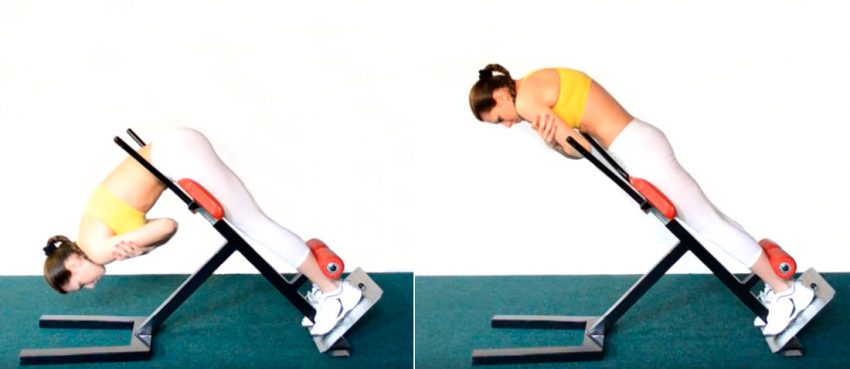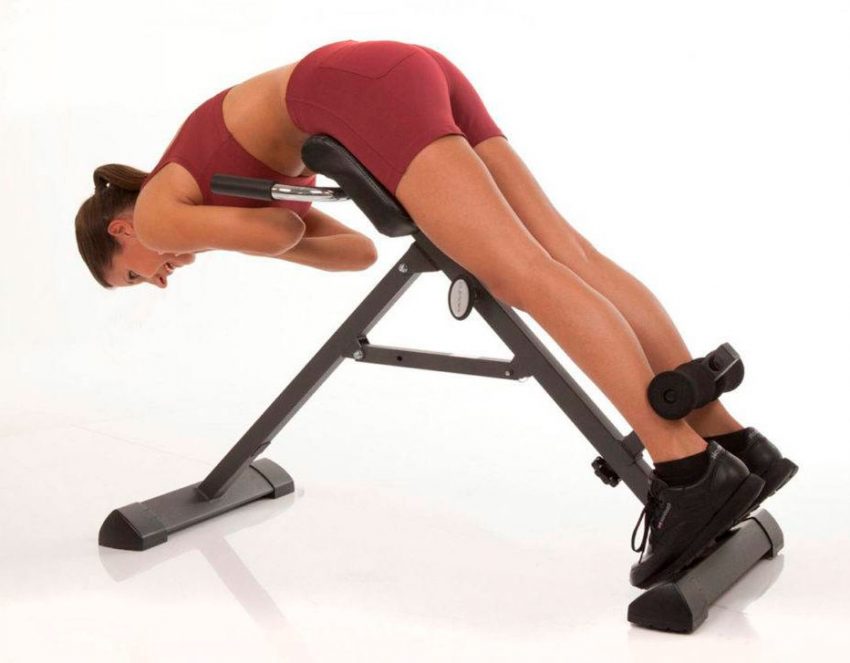A feature of such an exercise as hyperextension is its universal nature. Initially, the movement was invented to strengthen the long back muscle, hamstrings and buttocks “on the residual” principle. But bodybuilders cannot be fooled – they will adapt any exercise to their needs. “Glute” hyperextension was born, by the way, not in the bowels of an aesthetic sport, but in weightlifting. There she bore the prosaic name “lifting the body through the trestle with a rounded back” and served as an auxiliary exercise in the snatch and clean and jerk. Someone noticed that it is with this position that the buttocks experience the maximum load, the exercise was adopted by the figure shaping coaches. And now, quite a common movement is now called “gluteal hyperextension”, then “extension for girls.” Be that as it may, the exercise has a lot of nuances that you need to know.
Benefits and features

In fact, the buttocks work in other versions of the hip flexion and extension as well. For example, they tense up perfectly when the athlete does a regular extension, or hyperextension with straight legs, and even if a simple standing bend is done with a bar or barbell. The meaning of this movement is different.
With “glute-oriented” training, there are quite a few exercises in the plan that overload the long muscle of the back and the thoracolumbar fascia. Typically, the athlete does as many sets of deadlifts with straight legs, Romanian deadlifts with a barbell and dumbbells, heavy glute bridges and squats per workout.
All this “shakes” not only the target muscle group, but also causes tension in the lower back. Any athlete in such conditions is faced with lower back pain sooner or later. Fitness beginners often quit their workouts precisely because of the pain. They do not get not only the desired effect, but also any effect in general, because they think that they have been injured and finish training early.
But in fact, all you need is one of the exercises that would help compensate for lumbar hyperlordosis while standing, and help strengthen the gluteal muscles in isolation. In this regard, the Romanian round-back deadlift and the round-back hyperextension are ideal.
Execution technique

Initial position
- The hyperextension trainer is adjustable so that the length from the pillow to the foot allows you not to overextend the knees;
- The emphasis is taken in the simulator with the feet, and the hips in the pillows;
- Inhale, exhale, on exhalation, the stomach is drawn into itself, and the back is rounded;
- Starting position – the body “hangs” down, the back is rounded in the thoracic region, the stomach is pulled in;
Traffic
- Extension in the hip joint is performed from the lower position;
- With the effort of the muscles of the buttocks, the body rises in line with the biceps of the hips;
- The rounding of the spine in the thoracic region is preserved;
- The buttocks at the top point are additionally strained also statically;
- Lowering is relatively slow, without inertia
